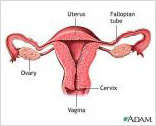About the Procedure

Infertility is defined as the inability of a couple to conceive after one year of un- protected sex. One of the common cause of infertility is a block in the fallopian tube. Till recently this problem required microsurgery and results after surgery was never very good. Over the recent years interventional radiology techniques have been extended to remove these blocks. The procedure is done under mild sedation and the patient is discharged after a few hours.
Procedures Details
Infertility is defined as the inability of a couple to conceive after one year of un- protected sex. One other common causes of infertility is blocks in the fallopian tube. Till recently this problem required microsurgery and results after surgery was never good. Over the recent years interventional radiology techniques have been extended to remove these blocks. The procedure is done under mild sedation and the patient is discharged after a few hours.
Fallopian tubes are fine little tubular structures that connect the uterus to the ovary. Once an ovum is mature it travels along the fallopian tube and it is here that fertilization takes place. Thus a block in these tubes makes fertilization impossible.
These blocks can be secondary to an infection like tuberculosis or a mucous plug. If it is a mucous plug, then removing this block can easily be achieved by passing a flexible soft wire through the blocked segment.
The procedure is normally performed on the eighth ninth or 10th day of a woman’s menstrual cycle. This is to enable pregnancy to take place in the first cycle following recanalization.
The procedure involves passing a small( sheath) tube into the uterine cavity through the vagina.This may cause mild discomfort. Through the sheath another smaller tube is passed into the uterine cavity and the opening to the fallopian tube intubated with the help of a guidewire. A brisk injection of contrast is made into the opening to flush out debris if present. If this procedure fails than the occluded segment is gently manipulated with a guidewire and the block removed.
Recanalization of these tubes is successful in close to 90% of the patient’s who present with cornual blocks [proximal 2 cm of the fallopian tube]. Blocks in other parts of the fallopian tube are secondary to infection and cannot be opened. It is also important to know that fallopian tubes may have disease outside usually due to adhesions. These have to be ruled out by a laparoscopy before a patient is taken up for fallopian tube recanalization.
Close to 40% of the patient’s who undergo successful tubal recanalization conceive within the first 6 months. However, it is important that the male partener is fully investigated and all abnormalities corrected before this procedure is taken up.
Tubes that have been recanalized may occlude again and then the procedure can be repeated.
Following the procedure the patient may have mild cramps and little bleeding for a few days. However all patients are encouraged to resume normal activities and have a normal sexual relationship with the husband.